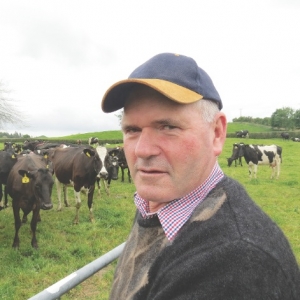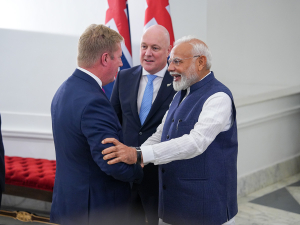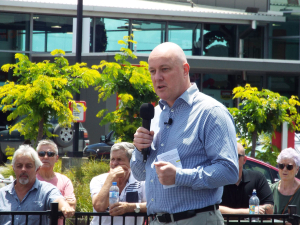Trevor Hamilton, who owns or has interests in eight dairy farms in the North and South Island, told Dairy News that though some of the people running these large scale operations have grown their businesses, they haven’t grown at the same pace in business planning, succession planning and governance. He says there have already been a number of high profile collapses in the dairy industry and more are occurring right now.
“One of the biggest challenges facing the dairy industry is for dairy companies to understand the wide diversity that’s within the shareholder base. If you go back ten or fifteen years, seldom did people own multiple farms; most people owned one farm, certainly no more than two. Now we have some large families – almost corporates – owning a number of farms doing several million kilograms of milk solids. I think the inability to address the issues with those is going to be to the ongoing detriment of the dairy industry,” he says.
Hamilton’s farms produce 2.4 million kgMS. His farms each run about 860 cows. The farms are near each other and form a hub which makes management easier. The four North Island farms are just south of Rotorua and the South Island ones are near Dunsandel, Canterbury. He has an operations manager in the South Island who looks after the four farms there and he has taken on the role of North Island operations manager as well as his owner responsibilities. He says they may appoint a separate operations manager in the North Island if they buy another farm.
Setting Hamilton apart is his unique governance structure. He and his wife Harriet have set up a board which consists of themselves, plus two independent directors, Massey academic Dr James Lockhart and accountant Greg Eden. None of the Hamiltons’ five children is on the board but they may be appointed in the future. The only other person present is the operations manager, Peter Aitken, but he does not have a vote.
“We have him in the boardroom the same as you would a chief executive. The aim is to give him a full understanding of what the board’s all about, where it’s going to, how we need to deliver on things and the general discussion of policies and strategies. We’ll ask him to leave if and when we feel there is something we need to discuss in private.”
The board meets bi-monthly and it’s set some clear strategies and policies which drive the business. From these are set the key performance indicators (KPIs).
Says Hamilton,“We have a high stocking rate and a policy of utilising pasture first and then filling the feed deficits as required with the cheapest possible alternative. So for every effective hectare in the business last year we produced 1880kgMS/ha. What we focus on is earnings before interest and tax (EBIT). Our focus is on profitability per hectare. We’ve ended up with a farming system that is a bit like franchising McDonalds burgers in that we have a farming system which we duplicate on all our properties. This makes it easier for staff.”
Communication is a top priority for the Hamilton operation. The operations manager meets with the farm managers on a regular basis and they in turn meet with staff. Reports are fed back to the board.
“I’d go to the South Island possibly once every six weeks and just deal with my operations manager, Peter Aitken and talk to him about any issues he may have. We ask managers to report every 10 days on pasture walks and provide monthly farm reports which come back to the board through the operations manager. So we don’t want to take our eye off the ball on any of the KPIs.”
This structured approach is critical to the success of their business, Hamilton says. Problems occur when junior staff don’t understand the
farm policies and structures. “We implement that very strongly and there isn’t a lot of room for deviation.”
Occasionally outside experts are called in to talk to all staff. For example their insurance company FMG recently talked to staff in the South Island about ways to reduce insurance claims. The same will be done soon for North Island staff.
What surprises many people is that the Hamiltons’ children are not on the board and in fact have to report the board. “When we started going down this path of formal governance we called all the five children and said ‘This is what we’ve achieved in the last 30 years and the last 10 years and this is where we can take the company in the next 10 years. We asked them if they wanted to be part of it and we had 100% buy-in.”
Four of the Hamilton’s children work in the business and for them it’s a case of ‘earned opportunity’ but not an inheritance. “We don’t believe in inheritance because it doesn’t bring about any learning. For example, my son and one of my sons-in-law have started at the bottom and worked up to where they manage some of the units, then we’ve opened up opportunity accordingly. The family members are now under no illusion that Harriet and I don’t make decisions, other than personal decisions, without the board. We have had instances of family differences and the independents on the board dealt with these on a business basis. That puts the line between what is business and what is family and that is the line we want to keep.”
The key to it all is governance and having people on the board who think differently from him: they add value.
“The exciting thing is where we can take it in the next ten years. People make the mistake of thinking it’s all about the money, but for me it’s all about the challenge. I think we can probably take it from a $100 million business to a $250 million-300 million business in the next ten years. This is based on the fact that 12 years ago we had two farms doing a total of 300,000kgMS and are now doing 2.4 million kgMS. How many people can I grow? How many family members can I grow? It’s hugely exciting.”
















